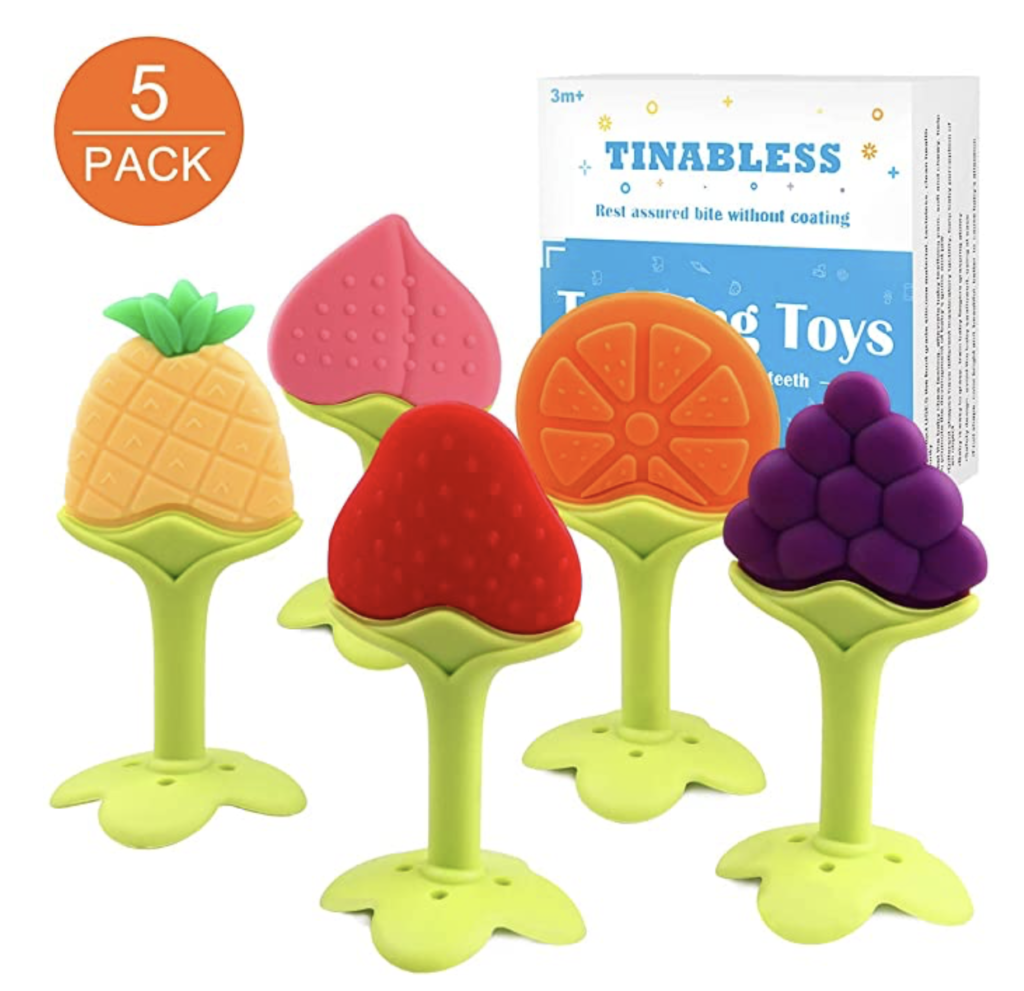Teething – what parents have to do when babies develop teeth
Teething on babies begin during the first year of age. Most babies will develop teeth between 6 and 12 months.
Around 3 months of age, babies increase saliva and start to put their hands in their mouth, but first tooth usually appears later, around 6 months old.
The bottom incisors (lower central incisors) are usually the first to come in, usually at around 5 to 7 months. Typically, most children will have all of their baby teeth by age 3.
Order of eruption of primary teeth
The general order of eruption of primary teeth is:
- Bottom incisors (bottom front teeth): the first to come through, usually at around 6 to 10 months
- Top incisors (top front teeth): these tend to come through at about 8 to 12 months
- Lateral incisors: these come through at around 10 to 16 months
- First molars: these come through at around 13 to 19 months
- Canines: come through at around 17 to 23 months
- Second molars: these come through at around 25 to 33 months

Teething symptoms
The symptoms are not the same for every baby. Baby teeth sometimes emerge with no pain or discomfort at all but at other times, baby may notice some symptoms:
- Baby’s gum is sore and red where the tooth is coming through
- One cheek is flushed
- your baby rubs his ear
- Loss of appetite
- Changes in sleeping patterns
- Fussiness and crying more than usual
- Gnawing or wanting to chew on hard things
On the other hand, there are some symptoms that are not normal such as:
- Fever
- Rash
- Diarrhea
- Vomiting
- Cough and congestion
How to soothe a teething baby
There are different things that parents can try to help their baby to feel better when he is teething.
- Something cold like a pacifier, a spoon or a solid refrigerated theething toy. Just make sure that everything your baby puts on his mouth is safe and clean.
- If teeth have not come yet, you can let your baby gnaw on your finger. You can also massage his gums by gently rubbing them with your clean finger.
- When nursing your baby you can try dipping your fingers in cool water and massage his gums before each feeding.

Camilia teething drops temporarily relieve symptoms of teething, including painful gums and irritability, as well as minor digestive disorders sometimes associated with teething.
It has no known interaction with other medications, it is not contraindicated with pre-existing conditions, and there is no risk of overdose or numbing your baby’s gag reflex. The sterile, single-use liquid doses are preservative-free, belladonna-free, and help to prevent contamination.
Camilia is recommended for babies one month and up and works best when taken at the first sign of teething.
It calms your baby’s teething pain and restore the peace.


The fruit teething toys are designed as a teether tree. Both sections are firmly and safely connected. Besides, it is flexible. There’s different shaped bumps under the base, baby can also chew to relieve gum soreness.
The soft silicone baby molar teether toys have the grooves and bumps to gently rub a baby’s gums without harming the child’s mouth area. The soft infant teething toys do not hurt them when putting it close to their face.
The handle is just right for baby to hold, and the size is good for them to chew. Designed to fit baby’s mouth comfortably without posing a choking hazard. It’s great way to keep them busy and entertained, at the same time have some relief for their teething.
It’s 100% safe for infants.

How to care new baby teeth
Bbefore the eruption of the first tooth parent can start oral hygiene of their baby teeth . Clean gums with a washrag after eating twice a day. Fluoride is extremly effective in reducing the development and severity of cavities. Check pediatrician or dentist because an excess of fluoride may cause fluorosis
Toothbrush

This toothbrush gently massages little teeth and gums with soft silicone bristles, which helps develop good oral hygiene habits early. It has easy-to-grasp banana peel handles and is made of 100% flexible silicone to prevent mouth injuries.

